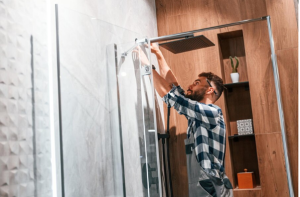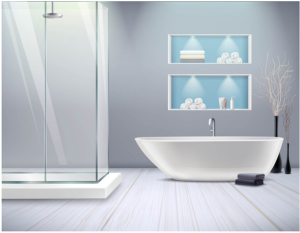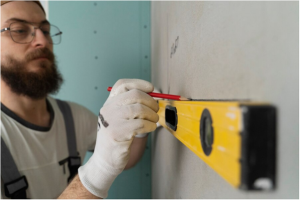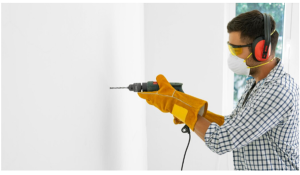Installing a shower panel can be a huge task, mainly when upgrading a bathroom, which is the first experience. However, it is not so complicated if you have the proper tools and a strategy for installing. Breaking down the process into manageable steps helps lessen stress and simplify the installation.
Besides, one should know it is a matter of preparation. Preparation of the right tools, supplies, and knowledge will save the homeowner from headaches later. Knowing what you need for your space and where the panel is going gives one an easy time ahead. Careful planning, in this case, keeps everything seamless.
Also, while following the steps, remember that patience will be your best friend. As much as a rush may introduce errors, a steady pace yields a great result. Even the little things make quite a difference, such as sealing the edges properly.
This guide will walk you through each stage of the process. Whether you have worked on DIY projects before or this is your first time, this simple guide will make the process easier.

1. Pick the Right Shower Panel
Choosing the right shower panel is the first step toward a smooth installation. This step ensures the panel will fit your space, appeal to your style, and suit your functional needs. Take some time to measure the area in the shower to confirm that the dimensions perfectly match. This would help to avoid any issues at the time of installation.
While choosing the right shower panel, you must consider the features involved. Will you want just a very basic design or an elevated version with added features of body jets, rainfall showerheads, or even hand-held attachments? It can make all the difference in your shower experience at the end of the day.
Also, make sure resistant materials, such as stainless steel or toughened glass, are used so that your panel can resist harsh weather conditions. It is all good to go once you find the perfect shower panel for yourself. Choosing it right from the beginning will make this installation more pleasant and smooth.

2. Gather Your Tools and Supplies
Before you install your shower panel, ensure everything is in place. This saves you time and makes the work easier, from beginning to end. Prepare the necessary tools meant for the operation. You need a drill and screws to fix the panel to the wall and measuring tape that will guide you up to the exact position where you should install it. A spirit level ensures you set your panel straight and correctly.
You will also require some silicon sealant so that it may seal the edges of the panel to avoid leaking water from its back. Your wall may require extra support, so use a few plugs if necessary. Lastly, you may need a wrench or spanner to secure the water connections.
Gather these tools before beginning installation so you are not interrupted, and installation processes are more straightforward. Once all this is ready, then you will have passed the next step.
3. Measure and Mark the Wall
First, you will want to decide how high and where you would like to place your shower panel. Most panels mount vertically, which is a crucial aspect to consider when planning this.
Next, take a measuring tape and mark the exact spots where screws or brackets should go. Use a spirit level to ensure that your markings are straight since uneven lines can cause water leakage on the panel or the appearance of a crooked installation.

4. Drill Holes and Attach Brackets
Mark your wall as a guide for making the holes. Next, securely mount your shower panel using the right drill bit for whether your wall is made of drywall or tile, among other hard materials. Insert wall plugs into the drilled holes if the wall is tiled or particularly dense to ensure the screws can get a good grip. This is for stability upon installation.
Secure the installation brackets to the wall by drilling the holes and placing the plugs where needed. The brackets then support the shower panel to sustain its use safely over a long period. Secure the brackets tight enough that it will not wobble or result in any other kind of instability..

5. Connect the Water Supply
Your shower panel has inlets for hot and cold water; these should be connected appropriately. First, you must turn off the water supply, so it does not leak when working. This ensures that the installation is clean and safe.
Now, connect the piping to the inlets on a shower panel using a wrench or a spanner. Your instructive set that came with it could help you determine which may be for the hot water supply and which one connects to its cold counterpart.
After the pipes are attached, tighten the connections carefully without over-tightening because over-tightening can damage fittings and cause problems later on. If you notice a leakage around any fitting, tighten further until the leak disappears completely.
6. Seal the Edges
After mounting the shower panel and connecting the water, seal the edges to prevent water From dripping behind the panel and damaging your walls. Apply the silicone sealant along the edges where the panel meets the wall.
Furthermore, smooth the sealant with your finger or tool to achieve a clean, even finish. Allow the sealant to completely dry before using the shower. Proper sealing is critical to protecting your bathroom and for longevity and durability.
Final Thoughts
Although installing a shower panel may seem tricky, breaking it into steps makes it manageable. With the right tools, careful measurements, and patience, you can set up a shower panel that looks great and works perfectly.
Now, your bathroom is one step closer to becoming your favorite room. Enjoy the showering experience.



